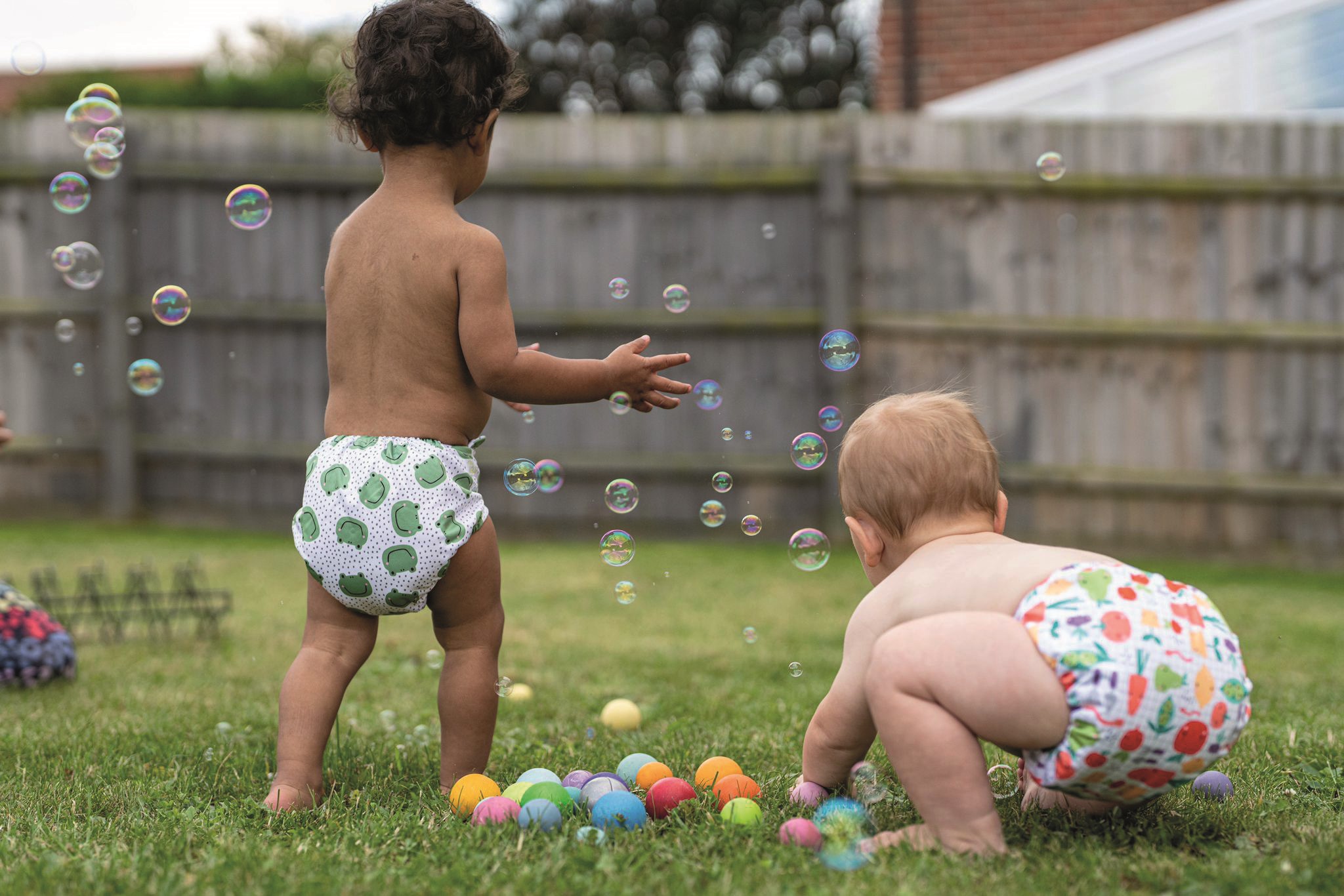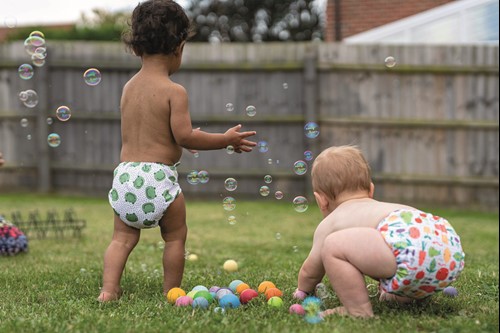A Useful Guide to Cloth Nappies
By Laura Smith
Cloth nappies can be really overwhelming before you start using them. Turns out, it’s really not that complex and once you get used to them it’s actually pretty simple!
Nappy types
There are various types of cloth nappies on the market:
- Pocket nappies: The shell has a pocket where you insert the boosters – this speeds up drying as you can take them out to dry and you can also change the boosters if you need more or less absorbency.
- All in one: The outer shell and boosters are all attached – drying time can be slower but they are simple to use.
- All in two: Absorbent insert that poppers into the waterproof cover.
- Terry squares/Prefold nappies: Terrys (or muslins) are folded by the caregiver and fastened together (you no longer need to use pins like our grandparents/parents did!). Prefolds are already pre-folded in a rectangular shape. You’ll need a waterproof cover over the top.
- Shaped nappies: Shaped to fit nicely, super absorbent and require a waterproof cover – great for night time!
Nappies come in different sizes as your child gets bigger (normally 1 -3) or a single ‘birth to potty’ size which can be adjusted to make the nappy bigger or smaller. You can also choose velcro or poppers depending on the brand.
Everyone has different preferences so if you’re unsure, we recommend that you contact your local cloth nappy library to borrow a kit and see what works for you.


Washing
Cloth nappies require more washing - we can’t deny that - but once you get into the swing of things, it’s not difficult and you’ll soon love the look of those cute little nappies hanging on the line.
Essentially, there are two steps to the washing process: first you need to do some kind of rinse or quick wash. Then a long wash at either 40 or 60 degrees with non-bio washing powder (no fabric conditioner) and that’s it!
You can store them in a nappy bin or wet bag until wash day (Usually every 3 days).
Poo….. breastfed poo can get put into the washing machine as its water soluble. Formula fed babies or babies that are having solid foods will need to have poo flushed down the toilet first. You can get reusable or flushable nappy liners which protect the nappy and make discarding of poo easier.
Cost
The initial outlay is of course more expensive than a few packs of disposables, but the overall cost of cloth nappies has been proven to be cheaper over time (unless of course you become addicted to the cute prints and want all the new releases!)
You can keep costs down by buying budget nappies (there are some with great reviews) and by buying pre-loved. Reusable wipes are also a brilliant money saver and they clean so much better than disposables!
Being Out and About/Childcare
We both use our nappy pods which can store 4/5 cloth nappies, wipes, wet bag for dirty nappies and a change of clothes! Put dirty nappies in the wet bag and sort out when you get home.
Have a chat to your childcare providers - lots of nurseries and childminders have experience using cloth nappies and are more than happy to accept them.
Don’t forget: if you use just one cloth nappy each day, you will send about 900 fewer nappies to landfill - so it doesn’t have to be all or nothing!
Authors note:
Laura Smith and Ebonie Chandraraj are Health Visitors. After they both had their second babies during the pandemic, they realised how the lack of support (due to covid) was really damaging to parents. Their Instagram page aims to solve this by providing information and spreading positivity.